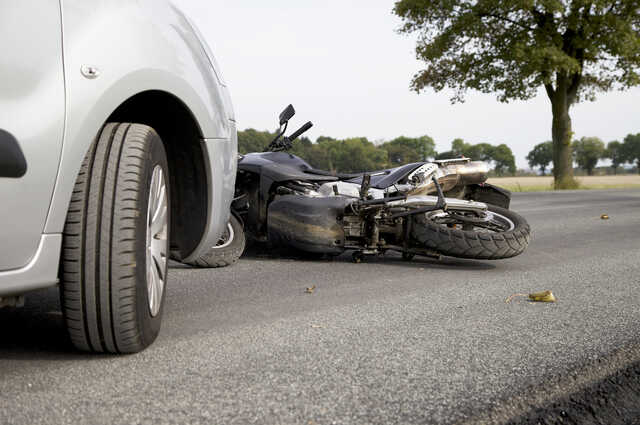

For individuals involved in a personal injury lawsuit or insurance claim, one of the top questions they have is usually centered around the amount of money their case is worth. Given the number of unique factors that come into play with a motorcycle accident, it would be impossible to accurately assess this dollar amount. However, this blog will cover some of the main points to consider in estimating the value of a motorcycle accident lawsuit.
Prejudice and Bias Toward Motorcyclists
When an individual is placed in the position of deciding the fate of another, the ideal situation would be for the judging person to completely leave out any bias, preconceived notion, or prejudice. With human nature being what it is, some people have a hard time putting aside their distrust of motorcyclists. Because of this, juries may not be as likely to grant large verdict amounts to motorcyclists, even though they wouldn’t hesitate to award a handsome verdict to an automobile driver in the same situation.
Insurance companies are well aware of this prejudice, and their adjusters often make lower settlement offers to motorcyclists as a result. For this reason, an injured motorcyclist needs to make a strong case and prove the main issues discussed in this blog.
Valuing a Potential Motorcycle Case
When valuing a case, one must estimate the amount a jury will likely award to the person (plaintiff) who is suing, and also estimate how much the defendant being sued will likely be willing to pay. In addition, one must closely estimate the amount that the plaintiff will accept as a settlement to avoid going to trial.
Two specific factors figure strongly in valuing a case:
- The extent of the damages suffered by the plaintiff. How serious was the motorcycle accident, and how severe were the resulting injuries?
- How likely is it that the jury will decide the defendant is at-fault for causing the accident?
Plaintiff’s Damages
Some decisions made by the jury will be based on concrete expenses such as medical bills already incurred and/or expected to continue, as well as lost wages. Other damages incurred by the victim are less concrete and are more subjective. This category includes such damages as pain and suffering, plus the degree that it will impose itself upon the victim during the future. Due to the individuality of each case and each jury, estimating the amount of damage compensation that will be awarded can only lead to a broad ballpark figure when looking at pain and suffering.
The degree to which a motorcycle accident affects the overall life of a plaintiff is critical in determining compensation amounts. For example, if a motorcyclist formerly led a very active life of skiing, hiking, and playing sports, but is now debilitated by a permanent painful limp, the quality of life is so diminished that a jury will likely award a higher amount than if the plaintiff was formerly physically inactive. In addition, if a permanent disability from the accident does not affect the plaintiff’s ability to perform work duties, the jury may not award much in damages for losing future earning potential, since none is lost.
Finding the Defendant Liable in a Motorcycle Accident
It is crucial for an injured motorcyclist to be able to prove at trial that the other driver was at fault for the accident. Without evidence to show the defendant’s fault, the case’s value is drastically reduced.
A defendant may be far more likely to allow the case to proceed to trial, without settling, if fault cannot be clearly demonstrated. If the plaintiff knows there’s no solid proof of the other driver’s fault in the accident, the plaintiff may more easily accept a low settlement amount as opposed to running the risk of losing at trial.
Once again, it should be mentioned that juries tend to look somewhat unfavorably upon motorcyclists in general. Therefore, the burden of proving the other driver’s fault is even greater in order to overcome a jury’s potential bias.
Amount of Insurance or Available Funds
If the driver being sued has very little in the way of assets, a settlement amount for the plaintiff won’t exceed the limits of liability on the defendant’s automobile insurance policy. Even if a jury verdict should be higher than said insurance limits, the plaintiff would likely be unable to collect the verdict amount. If there is no viable way to collect an amount higher than the insurance limit, it may be best for the victim to simply take a settlement in an amount equal to the insurance coverage limits.
Motorcycle Settlements and Verdicts
Some example verdicts from motorcycle accident lawsuits are as follows:
- $1,600,000 settlement – motorcyclist slid on loose gravel, suffering nerve damage and crushed vertebrae
- $355,000 settlement – motorcyclist killed when a truck driver pulling a light trailer made a left turn in front of the motorcyclist at high speed
- $300,000 jury verdict – truck made a left turn in front of a motorcyclist, causing damages that aggravated cyclist’s herniated disc, and created soft tissue injury, plus torn knee ligament
An experienced accident injury attorney can access a database of settlements and verdicts to find similar cases to yours. The legal representative can research verdict amounts and settlements in your jurisdiction.
Do You Need Cash For Your Motorcycle Accident Lawsuit?
Motorcycle accident victims face a higher chance of severe injury and life-changing consequences. Medical bills will be high and plaintiffs unable to work will lose wages. The Legal Funding Group is committed to helping these plaintiffs get back on their feet and with financial stability. We offer pre-settlement loans that provide finances for those waiting for a settlement to be reached.
Learn more by giving us a call or apply for legal funds online.


